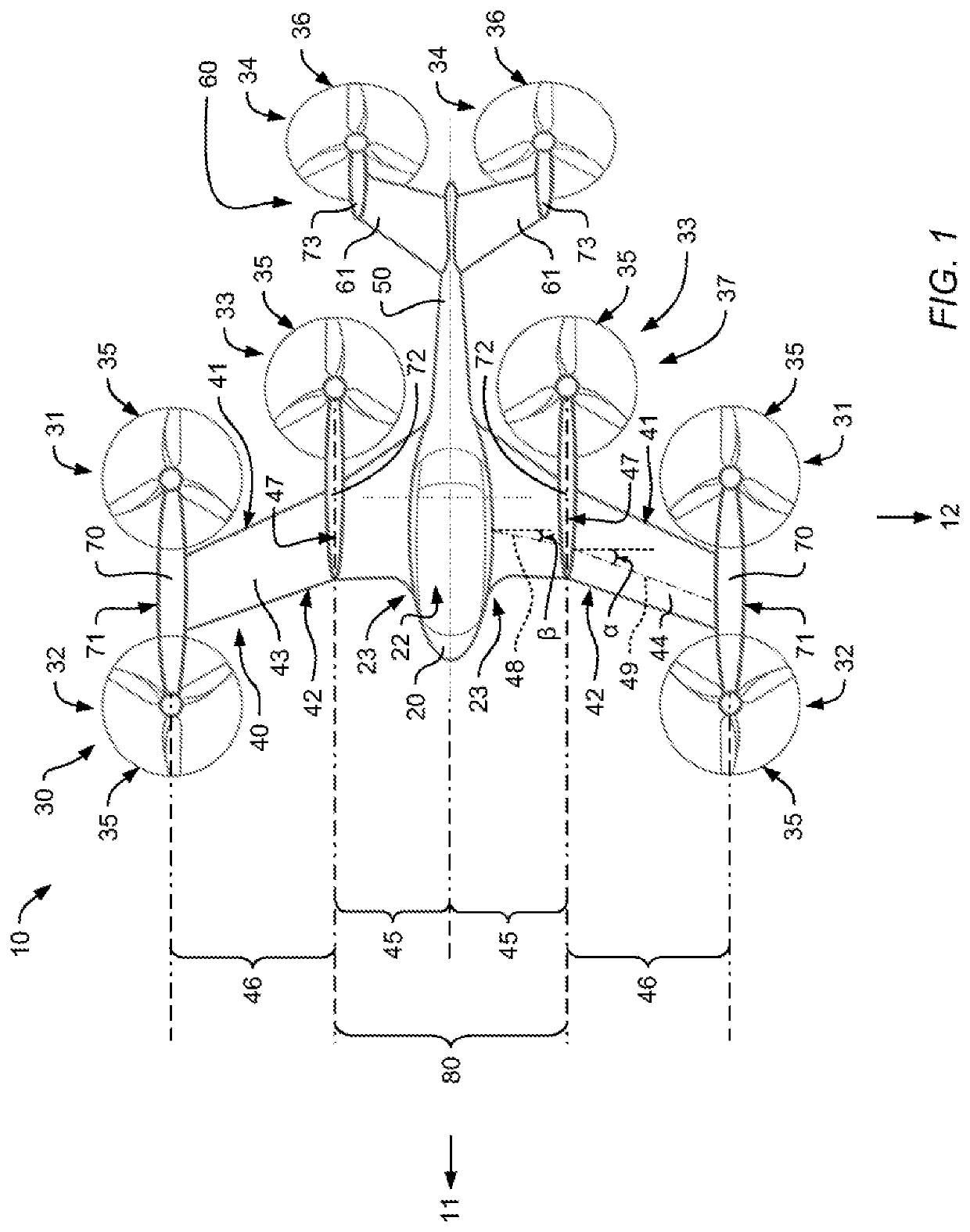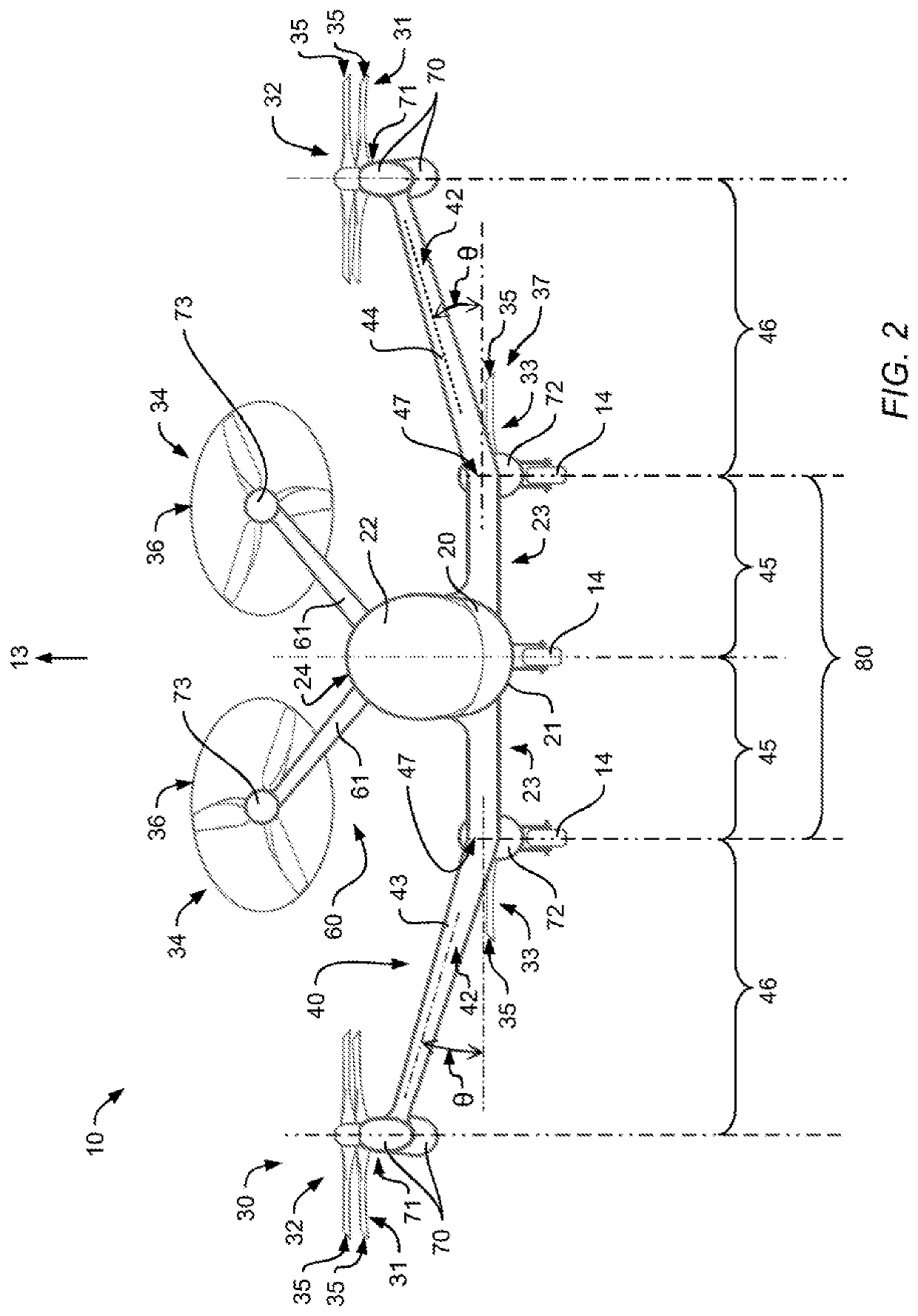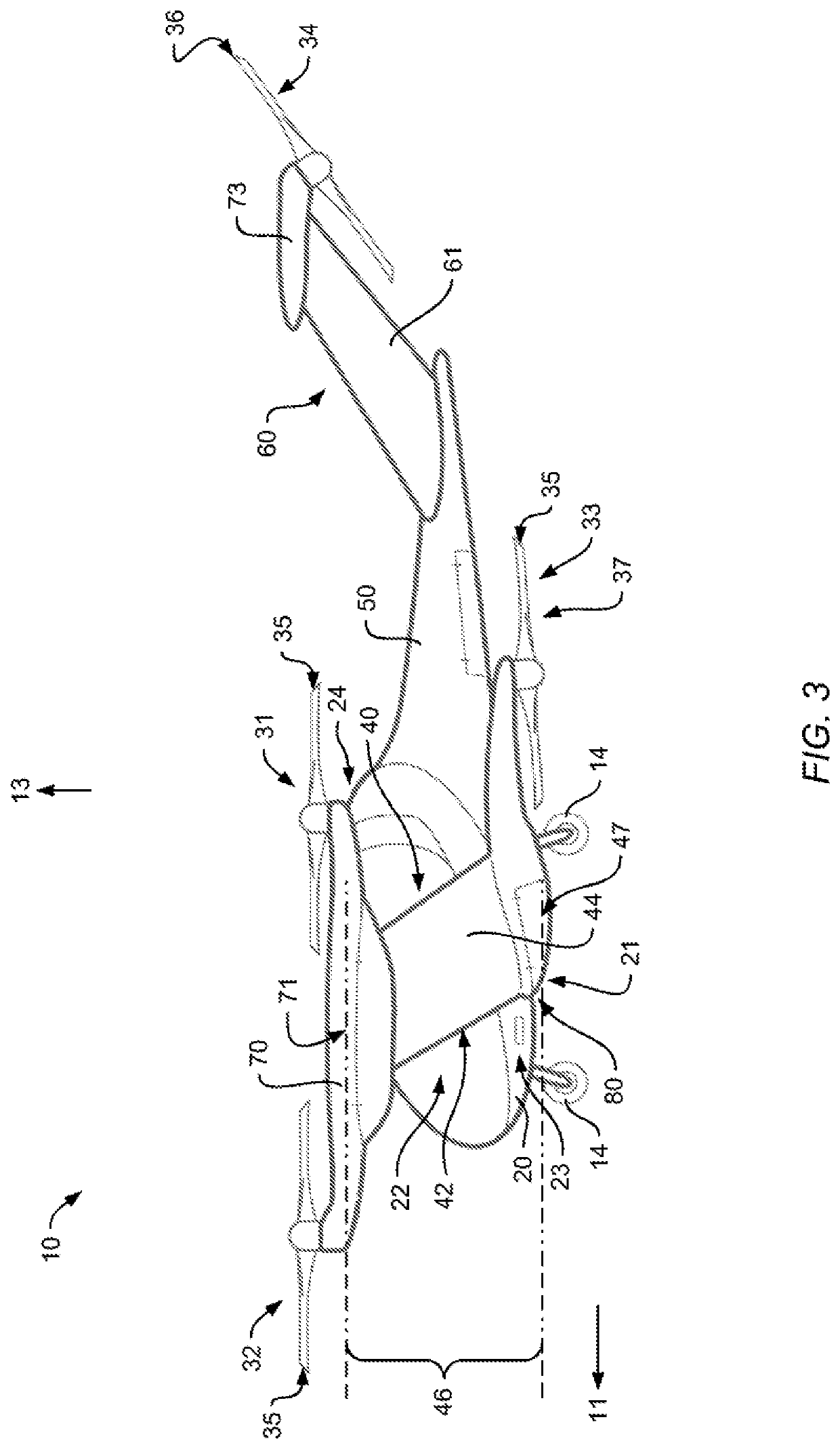Multirotor aircraft that is adapted for vertical take-off and landing
a multi-rotor aircraft and vertical take-off technology, applied in the direction of vertical landing/take-off aircraft, wing shapes, transportation and packaging, etc., can solve the problems of reduced structural weight efficiency, large load level on the respective aircraft structure, and lack of safe boarding zones, etc., to achieve the effect of improving structural efficiency
- Summary
- Abstract
- Description
- Claims
- Application Information
AI Technical Summary
Benefits of technology
Problems solved by technology
Method used
Image
Examples
Embodiment Construction
[0055]FIG. 1 shows an exemplary multirotor aircraft 10 that is adapted for vertical take-off and landing and, therefore, provided with a thrust producing units assembly 30 that produces thrust for producing lift and forward thrust in operation. The multirotor aircraft 10 is hereinafter referred to as the “VTOL multirotor aircraft 10”.
[0056]According to one aspect, the VTOL multirotor aircraft 10 is adapted for transportation of passengers and illustratively comprises a fuselage 20 that forms a cabin (22 in FIG. 2). The fuselage 20 may be connected to any suitable undercarriage, such as e. g. a skid- or wheel-type landing gear (e. g. landing gear 14 in FIG. 2). By way of example, a single tail boom 50 is connected to and, thus, extends from the fuselage 20 and an empennage 60 is provided at an aft portion of the tail boom 50 and mounted to the tail boom 50.
[0057]More specifically, the fuselage 20 preferably defines a boarding zone 23 that is at least adapted to enable an easy and sec...
PUM
 Login to View More
Login to View More Abstract
Description
Claims
Application Information
 Login to View More
Login to View More - R&D
- Intellectual Property
- Life Sciences
- Materials
- Tech Scout
- Unparalleled Data Quality
- Higher Quality Content
- 60% Fewer Hallucinations
Browse by: Latest US Patents, China's latest patents, Technical Efficacy Thesaurus, Application Domain, Technology Topic, Popular Technical Reports.
© 2025 PatSnap. All rights reserved.Legal|Privacy policy|Modern Slavery Act Transparency Statement|Sitemap|About US| Contact US: help@patsnap.com



